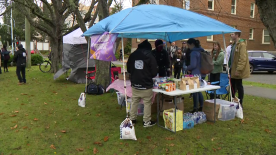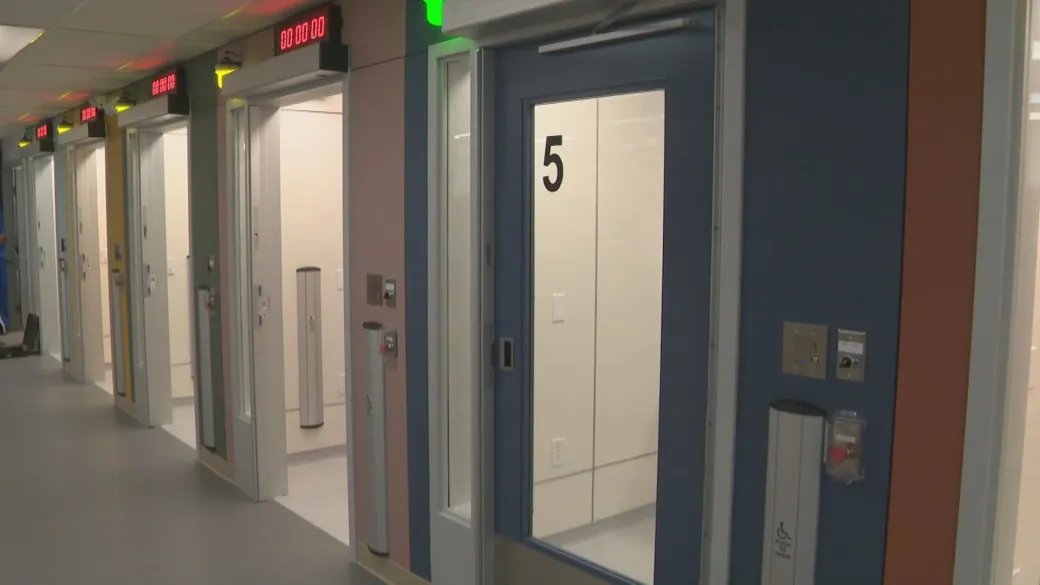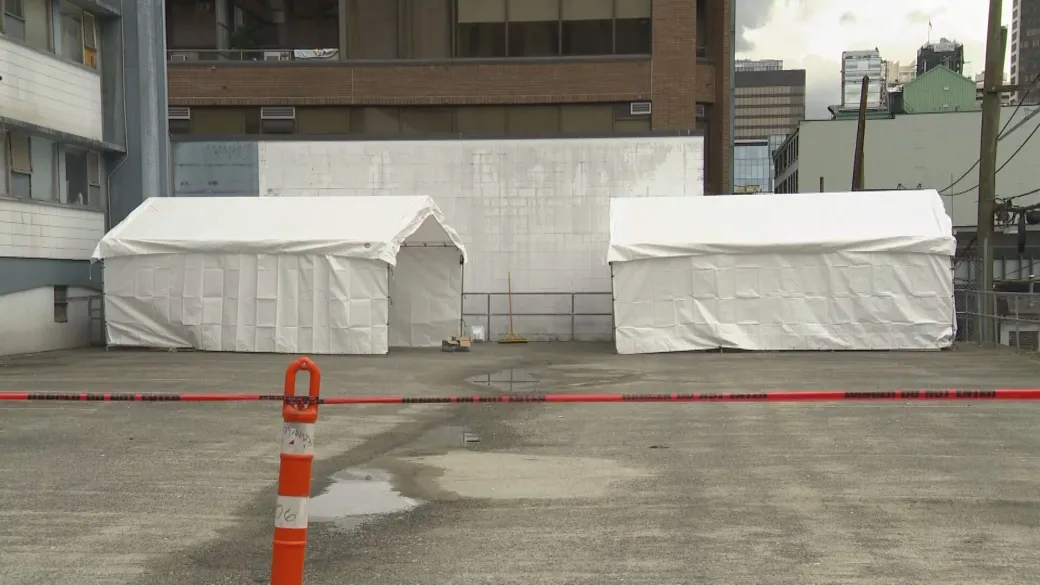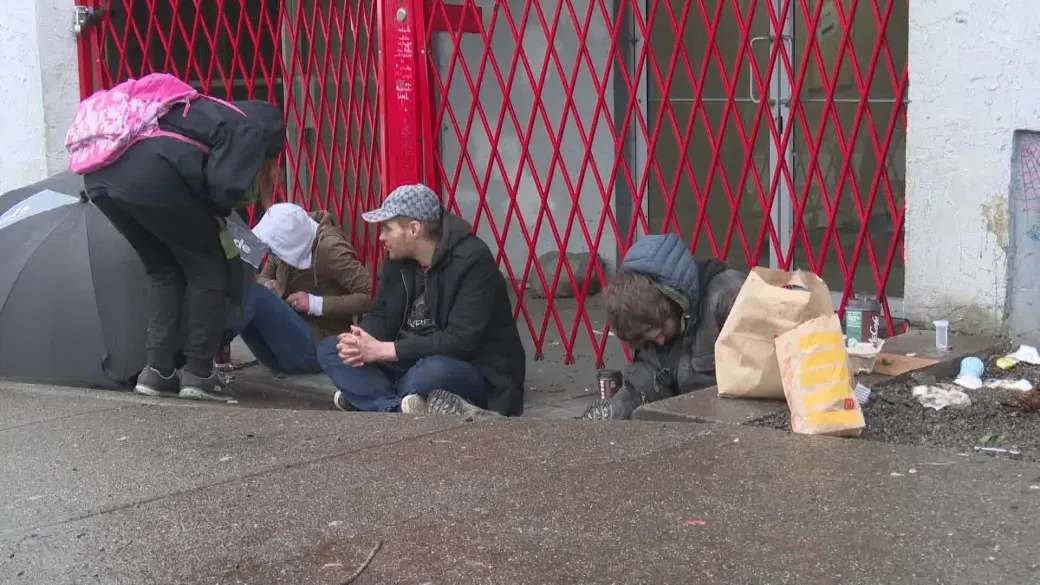November 20, 2024

Doctors on Vancouver Island have established a pair of unsanctioned overdose prevention sites outside hospitals, in a bid to pressure the provincial government for more action on the drug crisis.

The physicians set up pop-up sites at both Royal Jubilee Hospital in Victoria and Nanaimo Regional General Hospital on Monday.
Hospital security moved in quickly Monday morning to move the group’s equipment off health authority property.

The group of independent physicians says it has noticed an increase in the number of overdoses on hospital grounds, often in situations where there is no one around to help.
And it says patients with severe addictions are often left choosing between battling withdrawal symptoms in order to access vital medical treatment or leaving the hospital to use drugs.
“It’s a weekly occurrence that someone is found with drugs in their hospital room and they are asked to leave the property,” said Dr. Ryan Herriot, a family physician and addictions medicine doctor.
“They are basically given a choice between keeping the thing that is going to help you feel well and out of withdrawal or leaving the hospital when, again, they are there because they need life and limb-saving medical care.”
Herriot said doctors are also responding to issues raised by health-care workers inside the hospitals who are concerned about being exposed to drugs on the job.
Having a safe, segregated place for people with addictions to use drugs will also help address that problem, he said.
“No one thinks this is a good scenario,” he said. “We aim to alleviate those concerns too. This is the most ethical way to do that, to provide a dedicated space.”
In a statement, Island Health said it was committed to ensuring patients who use substances receive “equitable and accessible care,” and that its hospitals have addictions medicine consult teams embedded within them.
But it said ensuring the safety of patients and staff was of paramount importance.
“Operating an unapproved clinical service or demonstration on Island Health property cannot be supported,” the health authority said.
“This position is not meant to dissuade advocacy but rather to ensure that all services provided on Island Health property adhere to regulatory, safety, and clinical standards.”
Island Health operates eight overdose prevention sites, but none on the grounds of a hospital.

In April, then-health minister Adrian Dix announced a task force to address concerns about illicit drug use in B.C. hospitals.
That followed concerns raised by the B.C. Nurse’ Union about staff exposure to drugs and weapons in hospitals, and the circulation of a leaked Northern Health memo directing staff not to measure, weigh or test suspected illicit drugs found in hospital settings.
At the time, Dix said the task force would ensure there were “standardized practices” in all hospitals that ensure “the use of drugs is specific to designated spaces within or around the hospital or under the specific direction of a care team.”
Minister of Health Josie Osborne, who was newly appointed to the portfolio on Monday, said the issue was among the “important priorities” she aims to tackle in the days ahead.

The Health Ministry, under Osborne, is expected to take a greater role in addressing the drug crisis after Premier David Eby eliminated the Ministry of Mental Health and Addictions in his new cabinet.
“It is time now to integrate and work together, bring this together and be able to take that more flexible approach,” Osborne said.
“We will be working cross ministries, beginning to do more work in integrating the services that are helping to keep British Columbians safe.”
Herriot, meanwhile, appealed to Osborne to meet with him and other advocates.
“Please come speak with us,” he said.
“These things, it’s unequivocal – they save lives, they reduce the amount of drug debris in an area, they help connect people to treatment and other services, and, most critically, when we’re talking about saving lives, it helps people stay engaged in their healthcare.”